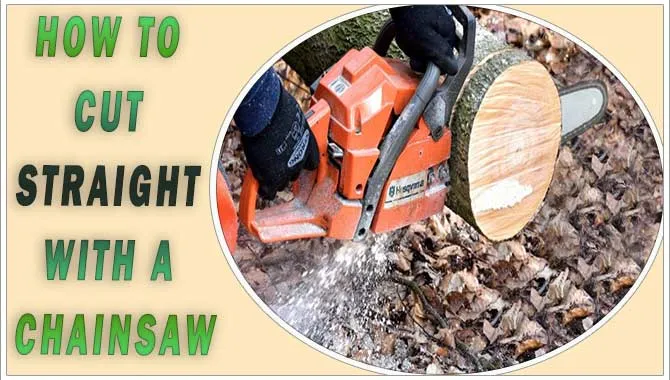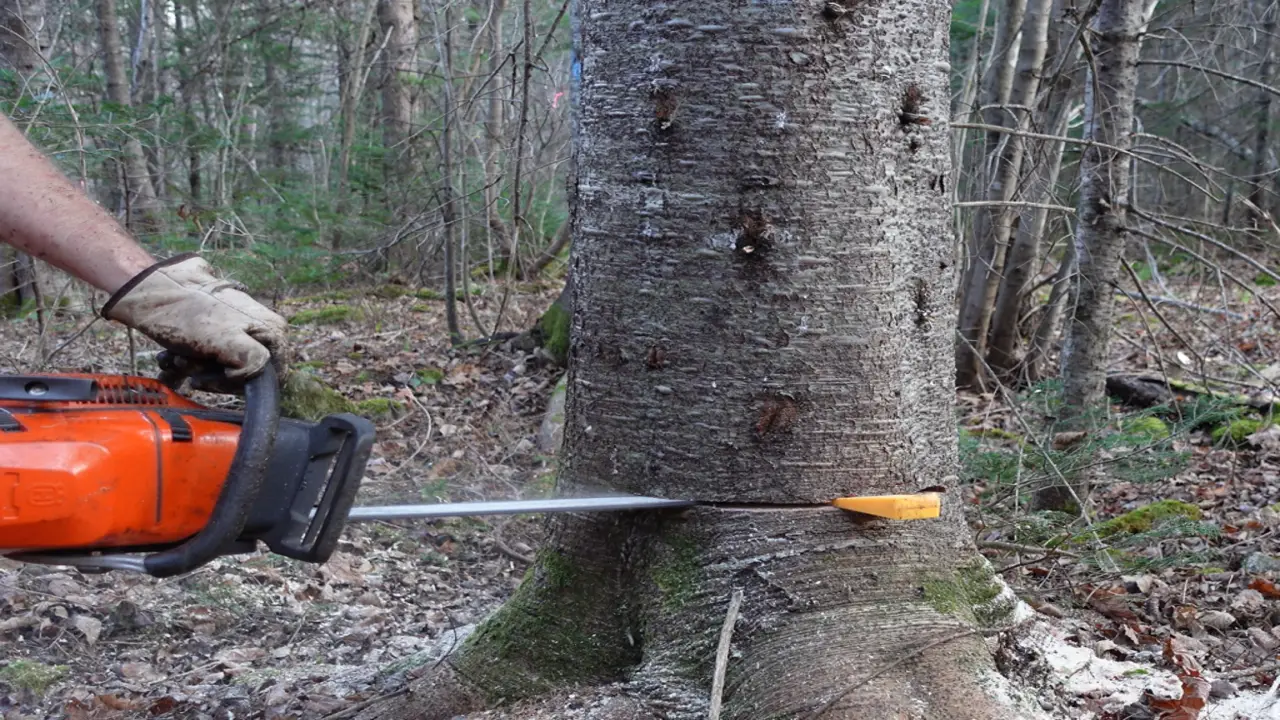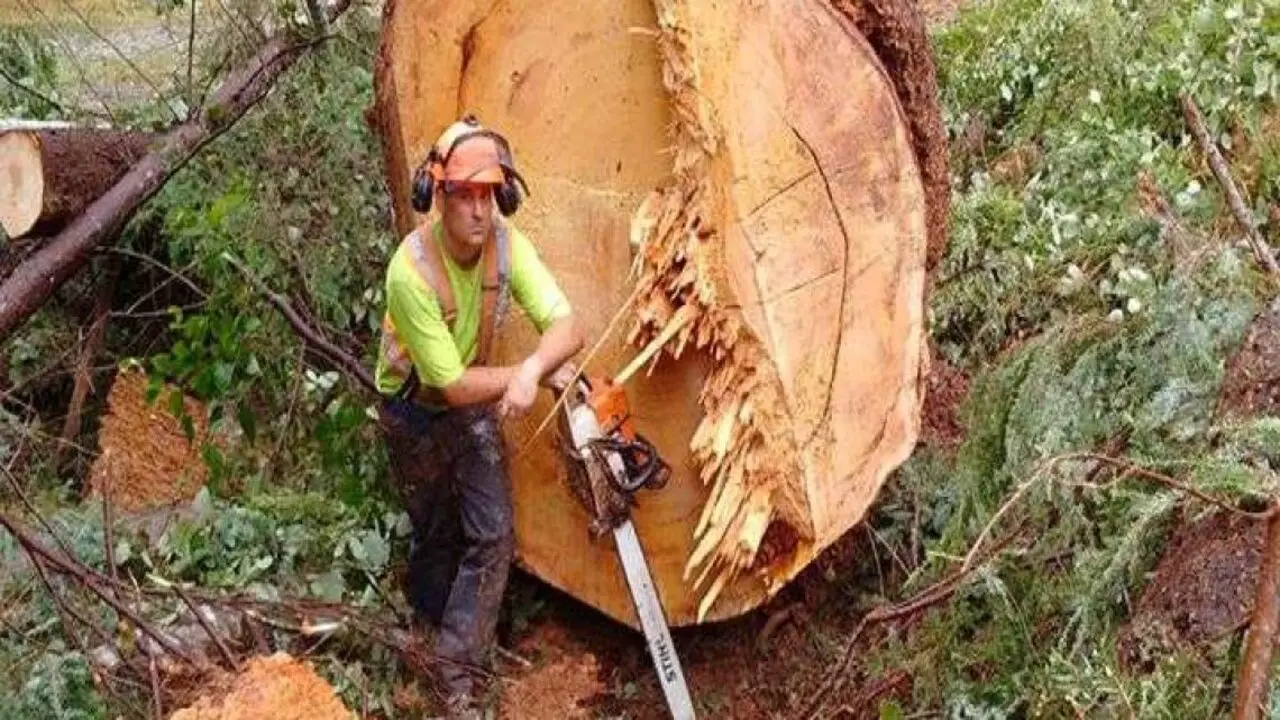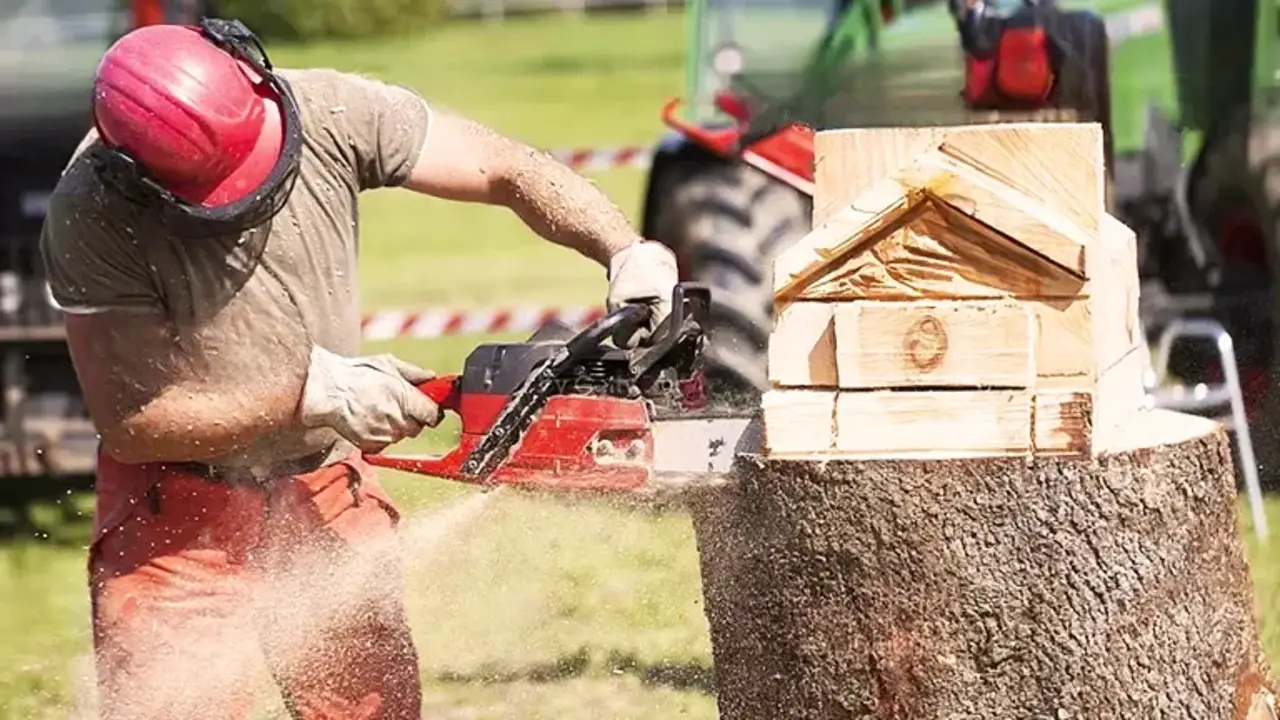Chainsaws are powerful and versatile tools commonly used in various industries and everyday tasks. While they are primarily used for cutting trees and lumber, they can also be used for other purposes, such as demolition, pruning, and carving.
However, one of the most important skills for any chainsaw user is the ability to cut straight and accurately. A straight cut ensures safety and creates a clean and professional finish. Many people struggle to achieve straight cuts with chainsaws, leading to uneven and jagged edges.
Whether you are a professional logger or a homeowner looking to do some DIY projects, learning how to cut straight with a chainsaw is an essential skill that can save time and effort and minimize material wastage.

5 Easy Steps On How To Cut Straight With A Chainsaw

Cutting straight with a chainsaw is an essential skill that requires precision and technique. Chainsaws, commonly used in various industries such as forestry and construction, are powerful tools that can quickly and efficiently cut through a wide range of materials.
However, achieving a straight cut with a chainsaw can be challenging due to the nature of the tool’s design and the potential for human error. To cut straight with a chainsaw, several factors must be considered. Selecting the appropriate chainsaw for the specific task is crucial.
Chainsaws come in different sizes and have varying features, such as guide bars of different lengths. Choosing the right chainsaw based on the thickness and type of material is essential for achieving a straight and accurate cut. Here are five easy ways how to cut straight with a chainsaw:
1. Proper Alignment
Start by positioning yourself and the chainsaw to allow for a straight cut. Stand directly behind the chainsaw and maintain a firm grip on the handles. Proper alignment is crucial when operating a chainsaw, as it ensures the accuracy and safety of the cutting process. To achieve a straight cut, one must correctly position oneself and the chainsaw.
Begin by standing directly behind the chainsaw, maintaining a stable and balanced stance. Distribute your weight evenly on both feet to enhance stability and reduce the risk of losing control during operation. Also, maintain a firm grip on the handles to control the chainsaw’s movements.
2. Mark Your Line

Before starting the cut, mark the line you wish to cut along using a straight edge or pencil. This will serve as a guide and help you maintain a straight path. To ensure precision and accuracy while executing a cut, it is crucial to begin by marking the line along which the cut will be made.
This preliminary step is a fundamental guide, enabling the operator to maintain a straight path throughout the cutting process. The line can be clearly demarcated on the material using a straight edge or pencil, providing a visual reference point for the cutter to follow.
3. Maintain A Steady Pace
When cutting, it’s important to maintain a steady pace. Avoid rushing or applying excessive force, leading to an uneven cut. Let the chainsaw do the work and guide it along the marked line. Maintain a Steady Pace: Maintaining a steady pace is of utmost importance when cutting, whether it be felling a tree or trimming branches.
Rushing through the cutting process or applying excessive force can have detrimental effects, resulting in an uneven and potentially unsafe cut. Allowing the chainsaw to do the work is crucial to achieving optimal results, acting as a guide along the marked line.
4. Balance And Control

Keep your body balanced and maintain control over the chainsaw at all times. Avoid jerky movements and ensure the chainsaw is properly sharpened and maintained for optimal performance. Balance and control are crucial when operating a chainsaw. Maintaining a properly balanced body posture is essential to ensure stability and reduce the risk of accidents.
This can be achieved by keeping your feet shoulder-width apart, distributing your weight evenly, and bending slightly at the knees. By maintaining this balanced stance, you can effectively counteract the force and vibrations generated by the chainsaw, minimizing the chances of losing control.
5. Practice And Experience
Cutting straight with a chainsaw is a skill that requires both practice and experience. It may seem simple in theory, but it can be quite challenging. One must have a firm grip on the chainsaw and maintain a steady hand while operating the machine. Additionally, having a keen eye for alignment is crucial to ensure that the cut is made in a straight line.
This skill is particularly important when working on projects such as felling trees, cutting lumber, or even shaping wood sculptures. To cut straight with a chainsaw, one must familiarize oneself with the machine and its controls. Understanding the weight distribution and balance of the chainsaw is essential for maintaining stability during operation.
Know Your Safety Limitations Before Cutting

Before you start cutting, it’s important to understand your safety limitations. Ensure you know the blades that are appropriate for the material you’re using and the safety features of your specific saw. Knowing your safety limitations before cutting is important when working with a power tool. This way, you can stay safe and avoid any accidents. Here are some safety tips before cutting it:
- Always wear a chainsaw guard and eye protection when cutting.
- Carefully study your target before starting the chainsaw operation.
- Start the chainsaw at a slow speed to prevent injury.
- Use a chain sharpener to keep your chain in good condition.
- Be aware of the distances between obstacles and the chainsaw blade when cutting.
- Be sure to stop the chainsaw if it becomes difficult to handle; use the emergency stop button if necessary.
- Never use the chainsaw while you are under the influence of alcohol or drugs.
- Always check the oil level and replace it as needed.
- Respect private property, do not trespass, and do not operate a chainsaw in unsafe conditions.
Executing Straight Cuts Safely And Efficiently
Executing straight cuts safely and efficiently is fundamental in various fields and industries. Whether in woodworking, metal fabrication, or construction, making precise and accurate straight cuts is essential for producing high-quality results.
However, it is equally important to prioritize safety while performing these tasks to prevent accidents and injuries. Cutting straight with a chainsaw, safety should always be the top priority. Here are some tips to help you execute straight cuts safely and efficiently:
- Personal Protective Equipment (PPE): Always wear the necessary safety gear, including a hard hat, safety glasses or a face shield, hearing protection, gloves, and chainsaw chaps or leg protection.
- Proper Chainsaw Maintenance: Ensure your chainsaw is in good working condition before starting any cutting operation. Check for loose or damaged parts and ensure the chain is sharp and properly tensioned.
- Marking the Cut: Mark a straight line on the wood using a chalk line or a straight edge before cutting. This will serve as a guide throughout the cutting process.
- Positioning: Stand in a stable position with your feet shoulder-width apart and firmly planted on the ground. Hold the chainsaw with both hands, keeping a firm
Troubleshooting Common Issues And Challenges

Troubleshooting common issues and challenges is essential to problem-solving in various fields, including technology, engineering, and business. Understanding the underlying causes of these issues and employing effective solutions can significantly impact the overall performance and success of individuals and organizations.
Cutting straight with a chainsaw, there are a few common issues and challenges that you may encounter. Here are some tips to help you troubleshoot and overcome them:
- Chain Tension: One of the main reasons for cutting inaccurately is improper chain tension. Ensure that the chain is properly tensioned according to the manufacturer’s guidelines. A loose chain can lead to wobbling and an uneven cut.
- Dull Chain: A dull chain can cause the chainsaw to veer off course while cutting. Regularly sharpen your chainsaw chain to maintain its cutting efficiency. If the chain is excessively worn, consider replacing it.
- Proper Body Positioning: Correct body positioning while cutting is crucial for accuracy. Stand with your feet shoulder-width apart, keep a firm grip on the saw, and position yourself in a stable and balanced stance.
Advanced Tips And Tricks For Precision Cutting
Precision cutting is fundamental in various fields, including manufacturing, engineering, and medicine. It involves accurately and controlled material removal from a workpiece to achieve specific dimensions and desired shapes. The process is characterized by its meticulous attention to detail and the use of specialized tools and techniques to achieve high accuracy and precision. Here are some advanced tips and tricks for precision cutting with a chainsaw:
- Choose the right saw: Make sure you have a chainsaw appropriate for the cutting you will be doing. Different saws have different features and capabilities, so select one that suits your needs.
- Maintain sharpness: A sharp chainsaw blade is essential for precision cutting. Regularly sharpen the chain and check for any damaged or dull teeth. Replace or sharpen them as needed.
- Use a guide: To achieve straight cuts, consider using a guide. This can be a straight piece of wood or a specialized cutting guide that attaches to the chainsaw. It will help maintain a consistent cutting angle and keep the saw on track.
- Mark your cutting line: Before starting, mark the desired cutting line on the material you are working with. This will serve as a visual guide and help you maintain accuracy throughout the cut.
Conclusion
Cutting straight with a chainsaw may seem daunting, but it can be achieved effectively with the proper techniques and safety precautions. Following the steps information in this guide, individuals can improve their accuracy and efficiency when using a chainsaw.
Always prioritize safety and take breaks when necessary to maintain focus and control. While it may seem daunting, with determination and the proper knowledge, anyone can become proficient in cutting straight with a chainsaw.
However, it is important to prioritize safety and never take shortcuts when operating such a powerful and potentially dangerous tool. With practice and patience, anyone can learn how to cut straight with a chainsaw like a professional.
FAQs
Why Is It Important To Cut Straight With A Chainsaw?
Cutting straight ensures safety and precision, minimizing the risk of accidents and achieving accurate and clean cuts. Cutting straight is fundamental in various industries, including woodworking, metalworking, and construction.
What Are Some Tips For Cutting Straight With A Chainsaw?
Ensure a firm grip on the chainsaw, maintain a steady stance, use a guide or marking to follow, and avoid rushing the cutting process. Maintaining a firm grip on the machine is imperative to ensure maximum control and minimize the risk of accidents.
Can The Chain On A Chainsaw Affect The Straightness Of The Cut?
Yes, a dull or improperly tensioned chain can cause the saw to veer off course, so it is important to regularly sharpen and properly tension the chain. A dull or improperly tensioned chainsaw chain can harm the performance and safety of the equipment.
Are There Any Techniques To Help Maintain A Straight-Cutting Line?
Yes, using a straight guide or a straight piece of wood as a reference, making gradual cuts instead of forcing the saw, and maintaining focus and concentration all contribute to cutting straight with a chainsaw.
What Is The Proper Body Positioning When Cutting Straight With A Chainsaw?
Stand with your feet shoulder-width apart and position your body perpendicular to the cutting line. Keep a stable stance and maintain a controlled posture throughout the cutting process.

I am passionate about tools and electric work. I love finding new tools and experimenting with them.

